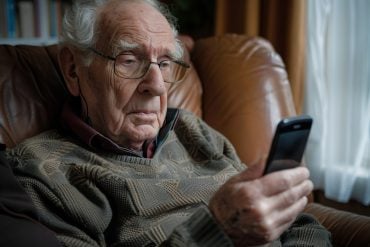RTC 13 effectively counteracts ‘nonsense’ mutation that causes disorder.
Scientists at UCLA have identified a new compound that could treat certain types of genetic disorders in muscles. It is a big first step in what they hope will lead to human clinical trials for Duchenne muscular dystrophy.
Duchenne muscular dystrophy, or DMD, is a degenerative muscle disease that affects boys almost exclusively. It involves the progressive degeneration of voluntary and cardiac muscles, severely limiting the life span of sufferers.
In a new study, senior author Carmen Bertoni, an assistant professor in the UCLA Department of Neurology, first author Refik Kayali, a postgraduate fellow in Bertoni’s lab, and their colleagues demonstrate the efficacy of a new compound known as RTC13, which suppresses so-called “nonsense” mutations in a mouse model of DMD.
The findings appear in the current online edition of the journal Human Molecular Genetics.
“We are excited about these new findings because they represent a major step toward the development of a drug that could potentially treat this devastating disease in humans,” Bertoni said. “We knew that the compounds were effective in cells isolated from the mouse model for DMD, but we did not know how they would behave when administered in a living organism.”

Nonsense mutations are generally caused by a single change in DNA that disrupts the normal cascade of events that changes a gene into messenger RNA, then into a protein. The result is a non-functioning protein. Approximately 13 percent of genetic defects known to cause diseases are due to such mutations. In the case of DMD, the “missing” protein is called dystrophin.
For the study, Bertoni and Kayali collaborated with the laboratory of Dr. Richard Gatti, a professor of pathology and laboratory medicine and of human genetics at UCLA. Working with the UCLA Molecular Shared Screening Resource facility at the campus’s California NanoSystems Institute, the Gatti lab screened some 35,000 small molecules in the search for new compounds that could ignore nonsense mutations. Two were identified as promising candidates: RTC13 and RTC14.
The Bertoni lab tested RTC13 and RTC14 in a mouse model of DMD carrying a nonsense mutation in the dystrophin gene. While RTC14 was not found to be effective, RTC13 was able to restore significant amounts of dystrophin protein, making the compound a promising drug candidate for DMD. When RTC13 was administered to mice for five weeks, the investigators found that the compound partially restored full-length dystrophin, which resulted in a significant improvement in muscle strength. The loss of muscle strength is a hallmark of DMD.
The researchers also compared the level of dystrophin achieved to the levels seen with another experimental compound, PTC124, which has proved disappointing in clinical trials; RTC13 was found to be more effective in promoting dystrophin expression. Just as important, Bertoni noted, the study found that RTC13 was well tolerated in animals, which suggests it may also be safe to use in humans.
The next step in the research is to test whether an oral formulation of the compound would be effective in achieving therapeutically relevant amounts of dystrophin protein. If so, planning can then begin for clinical testing in patients and for expanding these studies to other diseases that may benefit from this new drug.
Notes about this Duchenne muscular dystrophy research and article
Other study authors included Jin-Mo Ku, Gregory Khitrov, Michael E. Jung and Olga Prikhodko, all from UCLA.
The researchers report no conflicts of interest.
The work has been supported in large part by the Muscular Dystrophy Association (MDA) and, more recently, by the National Institutes of Health.
Written by Mark Wheeler
Contact: Mark Wheeler – University of California at Los Angeles
Source: UCLA press release
Image Source: Duchenne MD image adapted from public domain image by United States Department of Health and Human Services at Wikimedia Commons. Feel free to use.
Original Research: Abstract for “Read-through compound 13 restores dystrophin expression and improves muscle function in the mdx mouse model for Duchenne muscular dystrophy” by Refik Kayali, Jin-Mo Ku, Gregory Khitrov, Michael E. Jung, Olga Prikhodko, and Carmen Bertoni in Human Molecular Genetics online June 12, 2012 doi:10.1093/hmg/dds223







